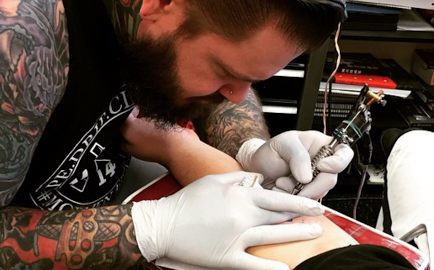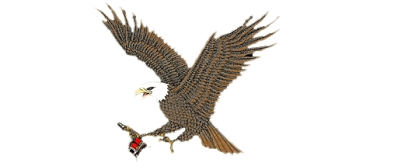History of Tattoos
Near the end of the 19th century, technological advances and exposure to other cultures lead to a Japanese-style tattoo craze among the American upper class, and those with full-body tattoos drew crowds at carnivals—at least until the 1940s, when high society’s fascination with tattoos began to wane. From that point until recent years, tattoos had been considered to be vulgar and the mark of deviants—something that only sailors, bikers, rockers or freaks sported. However, society’s perception of tattoos is quite different now. Tattoos have evolved into a highly-regarded art form.
Well over 45 million Americans have tattoos today, and that number continues to increase daily. Places, such as South Carolina, where tattooing was illegal a mere 10 years ago are now each home to hundreds of tattoo and piercing shops. Even some of the most conservative individuals have discreet tattoos in memory of loved ones or to commemorate special life events, and that alone speaks volumes for how far tattooing has come. Tattoos are no longer viewed to be rebellious, but as something that is deeply personal to the person, or just for the love of art.
The bottom line is that tattoos have become mainstream. The very same body art that only a few decades ago was considered a sign of deviance is now a popular way to remember a loved one lost, express you individuality, celebrate a special experience or milestone, emblazon yourself with the name or image of the love of your life, or use your flesh as canvas for fine artwork.
Statistics of Tattoos Today
What Ages Get Tattooed Now?
Individuals of all ages have tattoos. They are no longer considered the residual stamps of teenage defiance. In 2013, tattoos were more popular with older generations, but only by a few percentage points. By the end of 2013, 40 percent of Americans ages 26-40 reported having at least one tattoo, compared to 36 percent of Americans in the 18-25 age group.
According to an article about evolution of tattoos written by Joseph Brean wrote that, “[W]hen the old adopt the stylistic lingo of the young, the young tend to cringe and move on.” He implied that as more older Americans took interest in tattoo art, the younger generations would simply find a new way to express themselves. However, if you look at the latest statistics, it would appear that Brean’s prediction was wrong.
Fox News reported in 2014 that twice as many voting Americans under the age of 45 (31 percent) have tattoos as compared to people over the age of 45 (14 percent). 34 percent of people ages 18-30 have tattoos, and 19 percent of this age group have 3 or more tattoos. The tables have turned in just a year, and tattoos are again more popular with younger generations. They aren’t just getting tattoos either, they’re covering progressively more of their bodies with tattoos than ever before.
Do Men or Women Have More Tattoos?
Surprisingly, nearly half of voting women under the age 35 have a tattoo, but only a fourth of voting men in the same age range have a tattoo. For people over the age of 65, these numbers are switched. In this group, 14 percent of men have tattoos, while only 4 percent of women do. If you think about it, this actually makes sense because there are many retired military men in that age bracket and tattoos have always been popular among soldiers and sailors. Also, women 65 and older grew up in the decades when Americans were most closed-minded about tattoos, especially about tattooed women. There are some from the older generation that feel that tattoos disfigure a woman, and that they are just marginally-okay for men (in moderation). This explains why such a small percentage of Americans 65 and older have tattoos and why more men of that age have tattoos than women do.
The Future of Tattoos
While it is impossible to know what the future holds, based on the trends over the past few decades, it seems that tattoos are here to stay. As with fashion trends, tattoo trends may wax and wane in popularity, but it is unlikely considering how this art form has grown in recent years. Consider the evolution of tattoo supplies, for example. Tattoo supplies have changed so much to meet consumer demands over the past few decades, first with manufacturers working to produce sterile inks on the emergence of organic and vegan-friendly tattoo ink. Other tattoo equipment has evolved as well, but the development of products like topical anesthetics and other things that make getting a tattoo more comfortable that are most telling about the future of tattoos. Because these are factors that impact consumers directly, they continuously evolve to meet progressively higher standards, individuals will only appreciate the art form more and lust for more tattoos.
For more information or to get started on your next tattoo contact Tattoo Consortium with the link below!







Raven Wise liked this on Facebook.
Melinda Archer Drewyor liked this on Facebook.
TATTOO CONSORTIUM liked this on Facebook.
Amber Breeding liked this on Facebook.
Coushatta LaRue liked this on Facebook.
Marcus N Aubrey Vittonel liked this on Facebook.
Amy Brown liked this on Facebook.
Sarah Porter liked this on Facebook.
Ashlee Martakis liked this on Facebook.
Mary Laskoskie liked this on Facebook.
Sue Mortashed liked this on Facebook.
Alfred Hanna liked this on Facebook.
Alyssa Knuth liked this on Facebook.
Miriam Obregon liked this on Facebook.
Jacob Jones liked this on Facebook.
Chris Sledge liked this on Facebook.
James Fannin liked this on Facebook.
Bobby Taylor liked this on Facebook.